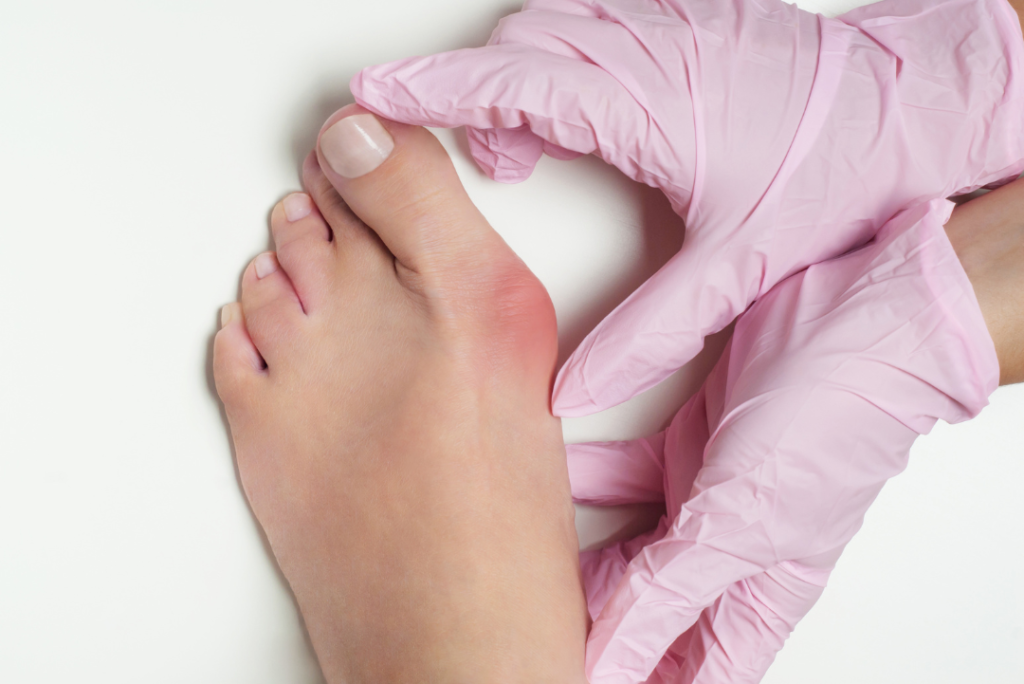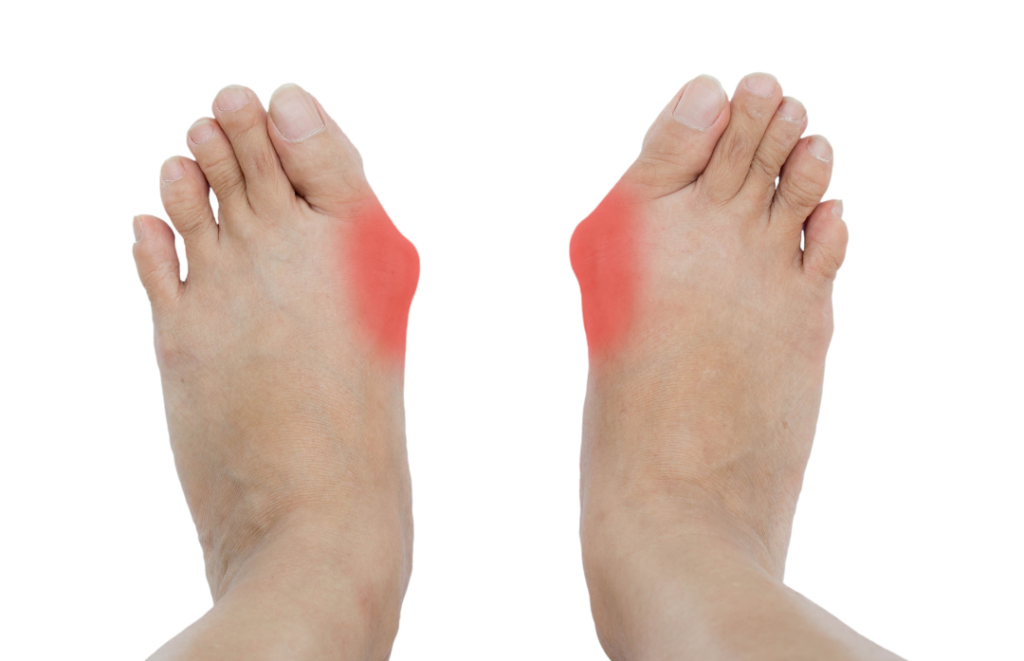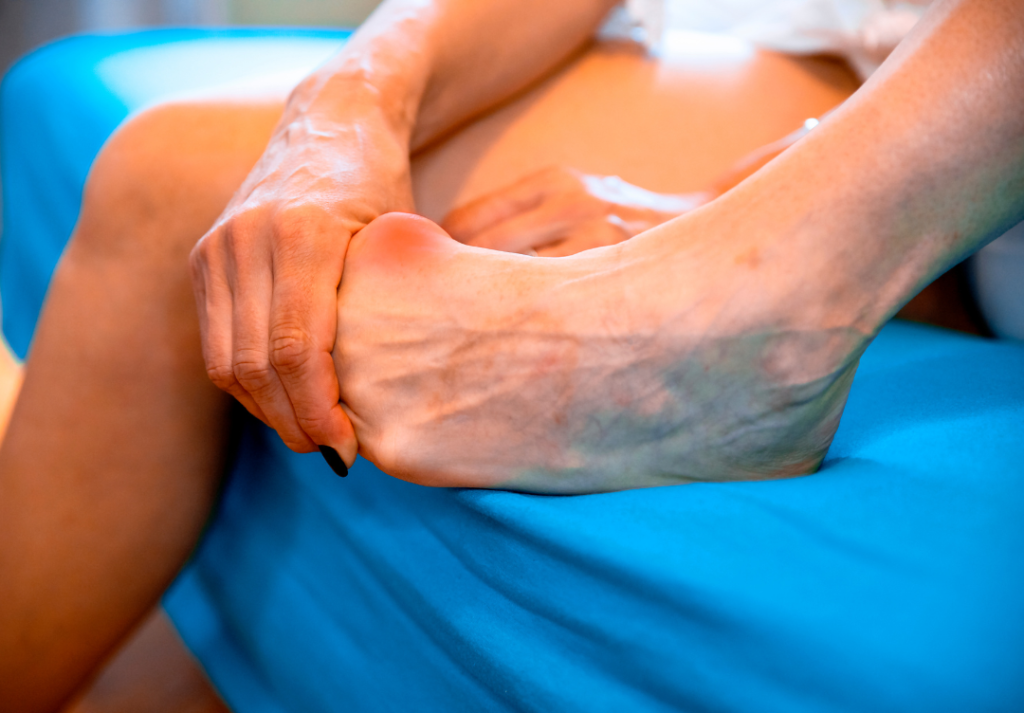Are Bunions Painful?
 Bunions are a problem faced by approximately one in four adults aged between 18 and 65 years – and may be even more prevalent in those aged over 65, as well as in women. Bunions are clinically known as a hallux valgus deformity, which medically translates to the big toe being positioned in an inwards-facing, deviated position.
Bunions are a problem faced by approximately one in four adults aged between 18 and 65 years – and may be even more prevalent in those aged over 65, as well as in women. Bunions are clinically known as a hallux valgus deformity, which medically translates to the big toe being positioned in an inwards-facing, deviated position.
In simpler terms, bunions look like a bony bump on the inside of the big toe joint, from which the big toe angles in to point towards the lesser toes – and eventually rub or bump up against them.
Are Bunions Painful?
Sometimes. This really depends on both the severity of your bunion, and your other foot and personal characteristics. Those with mild bunions that don’t rub against shoes or cause other issues may experience no pain. Others can have significant pain and discomfort with their bunions, leading to complications like blisters, calluses or corns on the side of the bunion, difficulty finding shoes that fit, and further pain when the big toe overrides or underrides the second or even third toe, this means it crosses over or under it. If you’re on your feet all day for work, this can exacerbate your symptoms, leading to redness and swelling.
In our clinic, we see a mix of both painful and painless bunions. For most people, their concerns with their bunions are in part cosmetic, and the other part often arises from difficulty with shoes, which they often fear are making their bunion worse – and in many cases their specific shoes are.
Is Bunion Pain Hereditary?
Interestingly, it’s not bunions that are ‘passed down’ through genetics, but certain characteristics of your feet (like a flat foot type and posture), which can increase your likelihood of developing bunions over time when exposed to the right conditions. While having family members with severe, painful bunions can be a predictor for whether you are more likely to experience this too, it should be noted that there are several things you can do to help manage bunions and slow their progression. These include:

- Wear comfortable shoes with a wide toe box: footwear that is too tight, narrow, or has a high heel can put pressure on the bunion and cause it to worsen. Avoid wearing shoes that are pointy or have a tight toe box, as they can squeeze the toes together and exacerbate the bunion.
- Use orthotics: custom-made orthotics can provide additional support and cushioning for your feet that matches the needs of your feet and their unique characteristics. This can help reduce pain and slow the progression of the bunion. These should be prescribed by a podiatrist after a careful assessment, and not be the one-size-fits-all insoles from a supermarket or pharmacy.
- Stretch and exercise the feet: working on your toes and feet can help keep them strong and flexible, which can help slow the progression of the bunion, particularly where muscle contraction and tightness is a contributing factor to the bunion developing.
- Consider your exercise routine: performing high-impact exercise activities, such as running or jumping, when you don’t have the right support for your feet, such as good shoes and orthotics, can put additional strain on the feet and exacerbate bunions. If you cannot wear orthotics and exercise causally or socially, consider low-impact activities, such as walking or swimming, instead.
- Consider bunion pads or splints: in some cases, padding or splinting may help keep the toes better aligned which may reduce pressure on the big toe joint, and hence the bunion.
If My Bunion Is Painful, Should I Consider Surgery?
 While some view surgery as a final ‘saving grace’ for their bunions, it’s important to understand that this may not be the case. Surgery is an option with the goal of reducing pain and better stabilising the position of the big toe, and it doesn’t come without its risks, complications, and pain itself.
While some view surgery as a final ‘saving grace’ for their bunions, it’s important to understand that this may not be the case. Surgery is an option with the goal of reducing pain and better stabilising the position of the big toe, and it doesn’t come without its risks, complications, and pain itself.
We have seen some patients in our clinic who have had bunion surgery and have been pleased with their outcomes. We have seen others that have been left with significant nerve pain in place of their bunion pain. We have seen some who deem the surgery on one foot successful, and the other, not so much. Some are very happy with their decision, and others regret it: which is the general nature of elective surgeries.
It’s important to consult with a surgeon (or even several surgeons) who can give you a complete picture of what you can expect and the risks, in the unique circumstances of your health, ability to heal, the recovery process, and whether your post-surgery expectations would match the actual outcomes or not – as often surgery is not the ‘fix all’ once thought. If you want to discuss surgery, we can refer you to recommended orthopaedic surgeons in the area.
Treating Bunions Without Surgery
Here at Masterton Foot Clinic, there’s a lot that our podiatrists can do to help relieve your bunion pain and slow their progression without surgery or any risk of complications. Our goal is to enable you to lead a healthy, happy and active life, regardless of your age or bunion severity.


